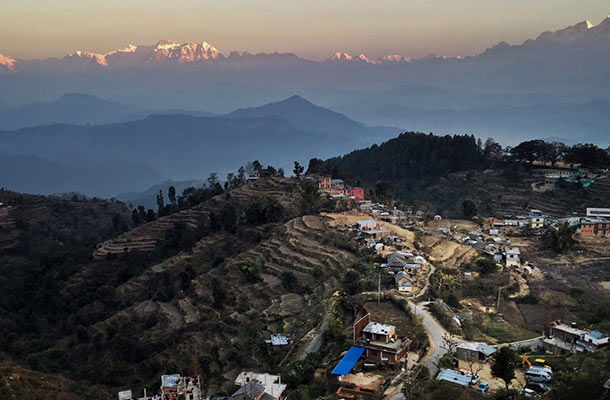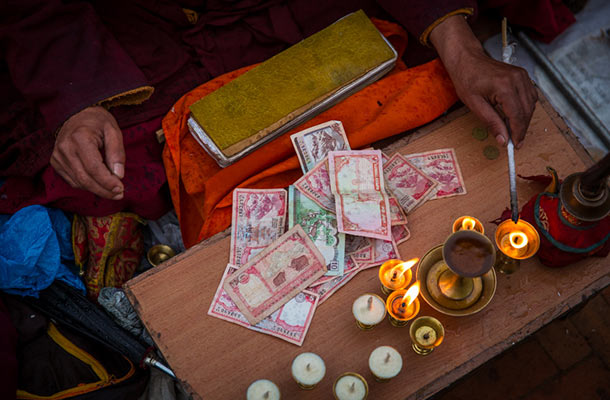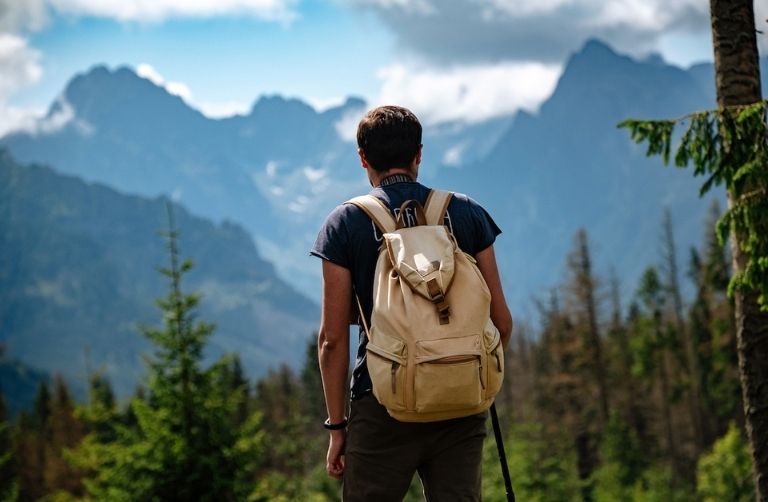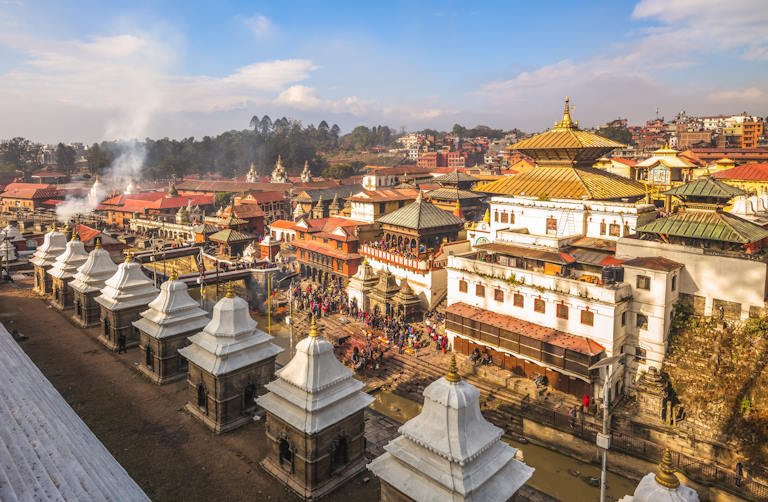When to Go: When is the Best Time to Hike in Nepal
Don’t let monsoon season ruin your trip to Nepal. Avoid heavy rain, muddy roads, frost and heat waves with these tips.
 Photo © Chris Potter
Photo © Chris Potter
- Beware of Nepal’s monsoon season
- Best season to Trek in Nepal
- Trekking in autumn
- Cold season: mid-December to mid-February
- Trekking in spring
- Water pollution in Nepal
- Air pollution in Nepal
Beware of Nepal’s monsoon season
As with any country with a monsoonal climate, Nepal has two distinct seasons.
Monsoon season starts in June, bringing rains, filling the rivers, and making fields lush with bright green vegetation.
The dry season typically starts in October and lasts till mid-to-late May. Due to climate change, the monsoon season has moved closer to autumn in recent years. This means the rain can sometimes keep pouring until the end of October.
Dry season is the season of clear skies, crops harvesting and, quite often, freezing cold up in the mountains.
The temperature in Nepal can range from -5°F (-15°C) at the high passes in winter, and up to 104°F (40°C) plus in the Terai – the southern plains in summer.
Best season to trek in Nepal
There are two time slots when the weather is ideal for trekking.
Traditionally, the most popular time is called “high touristic season” in Nepal. This lasts for two and a half months in autumn (Oct – Dec) and two to three months in spring (March – May).
Trekking in autumn
Autumn’s high season starts in October and ends in mid-December. Most of my treks to the Himalayas were during this time.
Autumn brings clear skies, amazing views of the snowy mountains and dry trekking paths.
The temperature in the valley is comfortable and warm, up to 77°F (25°C) degrees during the day, and may go below zero at night or when you’re above 11,480ft (3,500m).
Cold season: mid-December to mid-February
If you visit from mid-December to mid-February it’s usually not very pleasant because of the low temperatures, but the skies are typically clear.
Trekking in spring
The second part of the peak trekking season, spring, is also spectacular. Typically, this time of year has warmer temperatures but sometimes hazy views.
As May is the end of the dry season, expect to see some rain, which turns into snow above 11,480-13,100ft (3,500-4,000m).
Throughout spring, mornings are clear and sunny in the mountains, but the weather often changes rapidly from noon-2pm. Make sure you pack plenty of layering options and be ready to start your trek early to finish before the afternoon.
Nevertheless, the rhododendron blossoms in the mountains will be a breath-taking reward for those trekkers who come to the Himalayas in March-April.
Water pollution in Nepal
Nepal’s monsoonal climate can explain some of the beliefs and superstitions of Nepali people.
Water in the Holy rivers are perceived to be always pure and safe. However today, this is often not the case, so always bring water purification tablets with you, or bring your own bottled water when trekking.
Historically, all wastes and polluting substances were of organic (biological) origin, so everything decomposed and biodegraded easily during the wet and hot monsoon season.
Today, much of the waste is man-made and doesn’t readily biodegrade. This creates an unpleasant situation in the cities, where people still put any of their rubbish in the rivers.
Although more and more clean-up campaigns and awareness-raising programs are organised in Nepal – as well as some primitive waste-management infrastructure in the national parks – you can still find piles of litter along the trekking paths and city streets.
Air pollution in Nepal
Air pollution also exists in the cities and along the big roads. As with any major city, this is caused by the exhausts of motor vehicles.
Another issue, which can create a discomfort or even cause respiratory problems, is the dust from the roads without hard surface or the after-earthquake ruins in the city.
So, if you stay in Kathmandu or other cities for more than one day, it's worth wearing a medical mask or respirator, to protect your lungs.
Related articles
Simple and flexible travel insurance
You can buy at home or while traveling, and claim online from anywhere in the world. With 150+ adventure activities covered and 24/7 emergency assistance.
Get a quote


No Comments